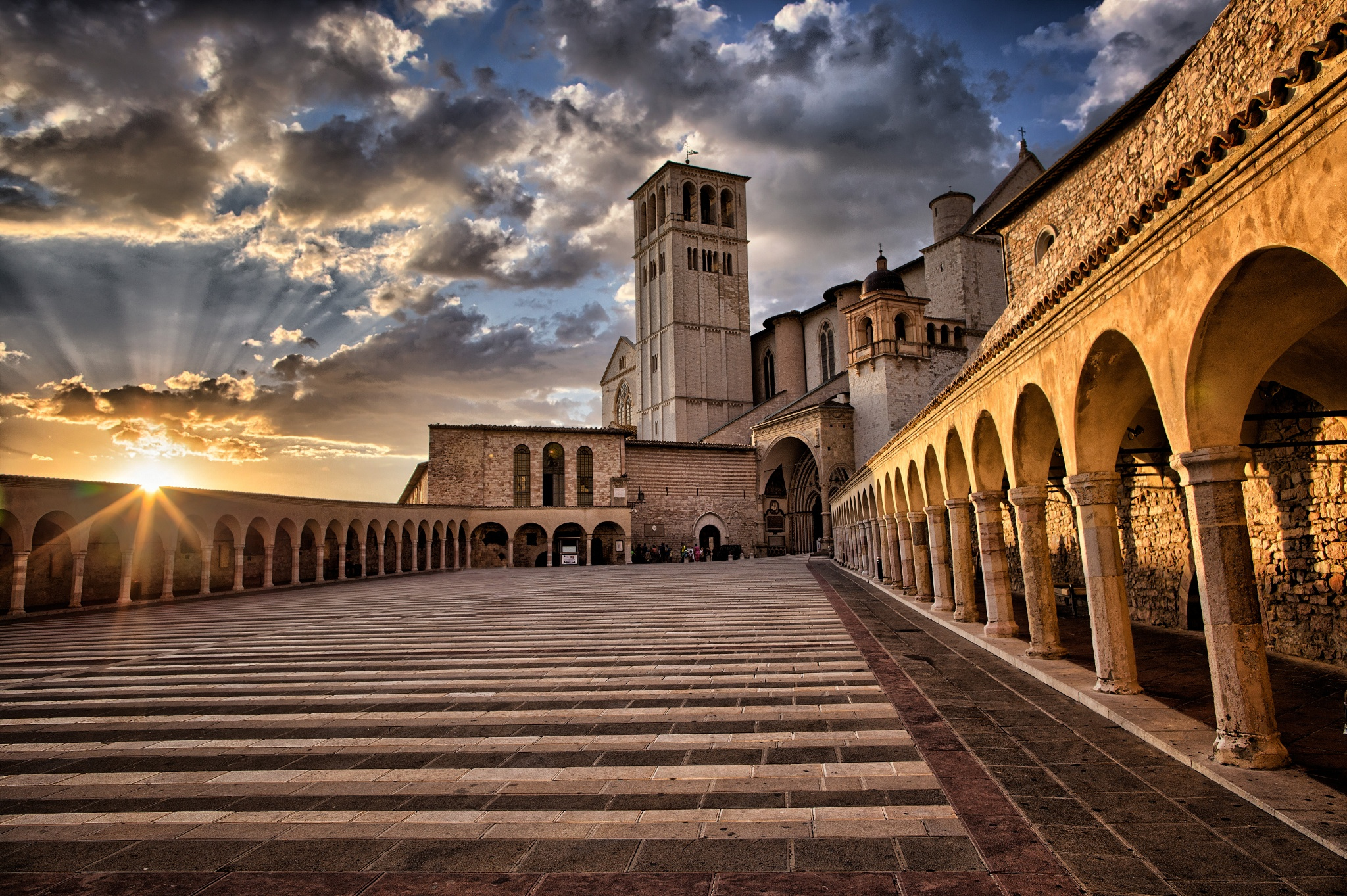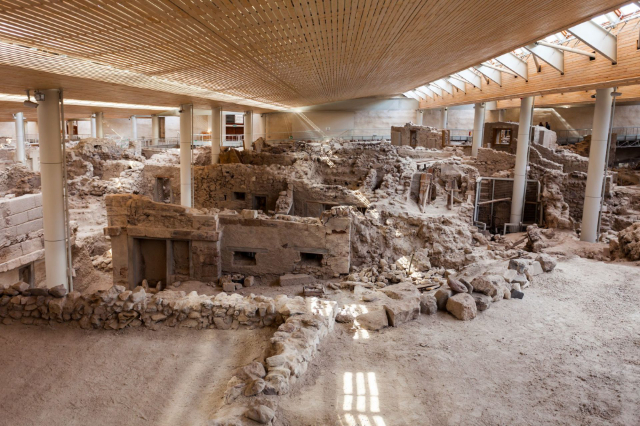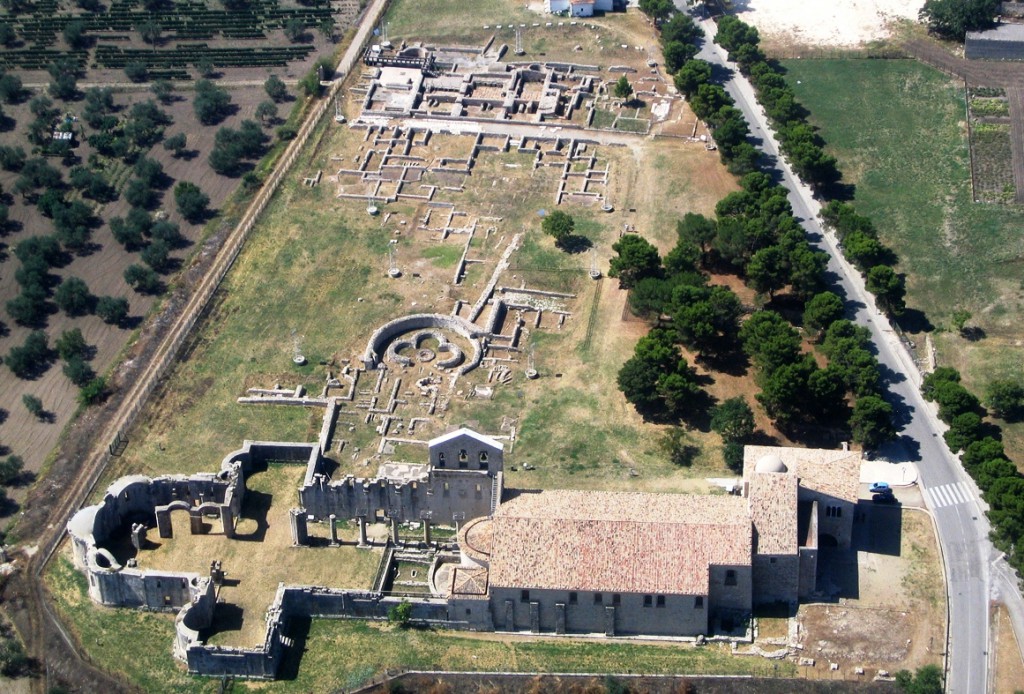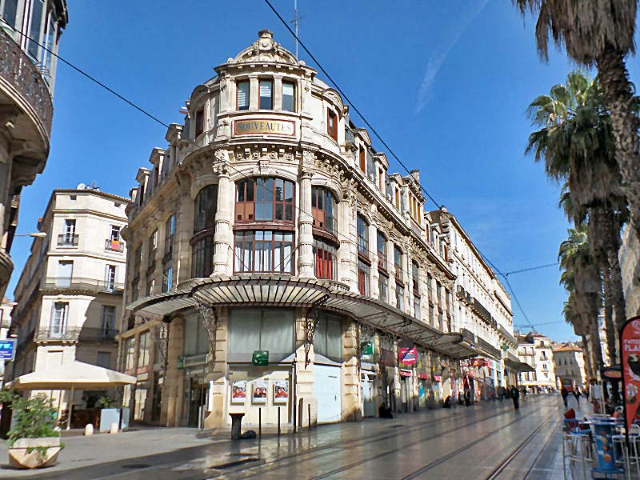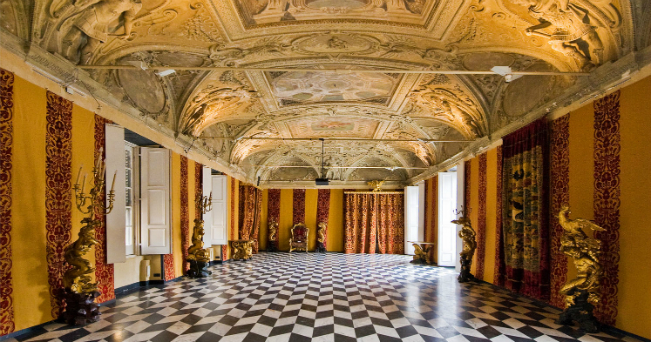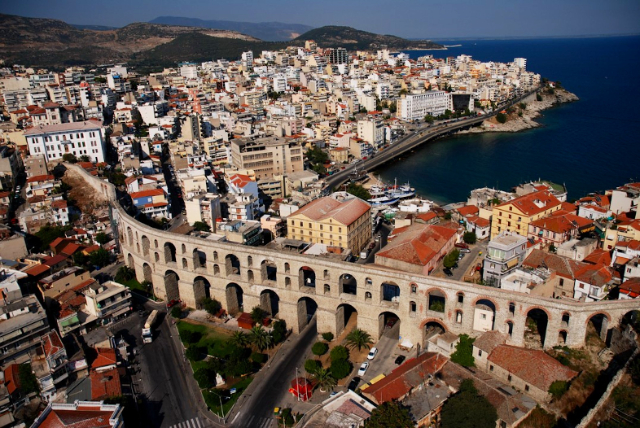Assisi is a city of Roman origin (with the name of Asisium), they are testimony numerous monuments like the facade of the Temple of Minerva, the Amphitheater, the Walls, the Forum.
With the fall of the Roman Empire the town became a settlement first of the Goths (1545) and then fell under the dominion of the Longobards.
With the Middle Ages became an independent municipality and experienced an extraordinary development especially thanks to the monastic movements (especially the Benedictines).
The most illustrious of its citizens San Francesco was born in 1182. Francis was proclaimed saint in 1228, only two years after his death, by Pope Gregory IX.
Later the City was under the hand of seigniories such as that of Gian Galeazzo Visconti, the Montefeltro family, Braccio Fortebraccio and Francesco Sforza, until the middle of the sixteenth century, when Umbria was conquered by Pope Paul III re-establishing papal control over the city.
More late, in the nineteenth century, the town became part of the rising Italian state.
It is known to be the city in which were born, lived and died San Francesco, patron of Italy, and Santa Chiara.
"[…] But who of this place makes words,
Say not Ascended, for he would say short,
but East, if he really wants to say it. "
(Dante Alighieri, Divine Comedy, 1304-1321, Paradise, canto XI, vv. 52-54)
The most ancient traces of human presence in the territory assisiate go back to the Neolithic.
Numerous archaeological finds indicate that Assisi draws its origins from a small village inhabited from the Umbrians already in the period villanoviano (IX century a.C.|IX – VIII century a.C.). As they show us the various archaeological finds recovered, the Umbrians entertained deep relationships (above all commercial) with the neighbors Etruscans, stanziati on the western bank of the Tevere, from which they differed, however, for language and culture.
The Romans in 295 a.C., with the battle of the Sentino, imposed definitively their dominion also in the Central Italy. The Umbrian city had the name of Asisium and was monumentalized to leave from the II century a.C. In 89 a.C. divenne municipium and was an important economic and social center of the Roman empire. Its toponym has prelatine origins, and preserving an uncertain etymology, is interpreted in two different ways. City of the hawk, or of the goshawk or from the Latin base ossa or torrent with obvious reference to the river Assino.
In the course of the III century, for the action of san Rufino, bishop and martyr, begins to spread the Christianity.
With the collapse of the Roman empire also Assisi knew the dark age of the barbaric invasions and, in 545, was sacked from the Goths of Totila. Conquered from the Bizantini, passed little time after (568) under the dominion longobardo and came annexed to the Ducato of Spoleto, of which shared the sorties until the beginning of XII the century.
From the communal age to the Renaissance
After a period of wars, in 1174 it was besieged and conquered from Federico Barbarossa, that gave the investiture of the town to the duke Corrado di Lutzen, said also Corrado di Urslingen: Assisi became imperial dominion, but popular uprisings (1198) inaugurated very soon the communal age, not without internal struggles and wars with the near Perugia. Between 1181 and 1182, is born to Assisi Francesco – son of Pietro di Bernardone and Madonna Pica – the future saint that, with its work, will mark the history of the place and the humanity.
In 1198 the people of Assisi, tired of the bullying of the duke of Lutzen, rebelled expelling him from the city. During the end of the first half of the thirteenth century the Guelph Assisi suffered various sieges from the Saracen troops and tartare part of the great army of Federico II of Svevia. The imperial troops devastated to more times the country but the city thanks to the valence of its militias and to the charisma of Saint Chiara resisted to the raids. In the years to follow Assisi saw to alternate to the control of the town guelfi and ghibellini. Subsequently the town passed under the dominion of the Church, of the Perugini, of Gian Galeazzo Visconti, of the Montefeltro, of Braccio Fortebraccio da Montone, passing finally under the control of Francesco Sforza.
In November of 1442 Assisi, defended in that period from Alessandro Sforza, suffers the siege of the troops commanded from the Piccinino. After many days of vain attempts the besieging troops, also thanks to the aid of a friar traitor, succeed to penetrate inside the surrounded of wall. Assisi comes heavily devastated and plundered but the Piccinino opposes however to the complete destruction of the town refusing the 15000 florins offered from the perugini.[3] The factions de Sopra (lined up with the Ghibellini) and of the Fiumi (of the Part de Sotto legacies to the Guelfi) faced themselves until the XVI century when the conquest of the umbria from part of pope Paolo III returned to the town a period of peace and calm.
Assisi Panorama.JPG
Panoramic view of Assisi.
From the modern age to today
Beginning from the XVII century, thanks to the foundation of institutes and academies, it resumes with great fervor the cultural activity, interrupted from the period of the Napoleonic wars (1799), when the French troops to the command of Napoleon Bonaparte sacked the city and many works of art.
In 1860, with a unanimous plebiscite, joined the nascent Italian state. The unification will allow the city to open progressively to the outside, thanks to the construction of the railway station. With the finding of the bodies of San Francesco (1818) and Saint Chiara (1850), Assisi becomes privileged goal of pilgrimages; the religious tourism gave a strong increment to the rebirth of the local economy.
Panorama of Assisi seen from the Cathedral of San Rufino: view of the Basilica of Saint Chiara
During the second world war, in the period following the 8 september 1943 and the German occupation, Assisi is literally invaded from the refugees, among which over 300 Jews. The bishop mons.Giuseppe Placido Nicolini – assisted from the secretary, don Aldo Brunacci, and from the guardian of the Convent of San Damiano, father Rufino Niccacci – transforms Assisi in one of the principal centers of the Italian civil resistance to the Olocausto. Disguised from friars and nuns, hidden in the basements and in the cellars, camouflaged between the evacuees, provided of false documents, the Jews rifugiatisi to Assisi are protected from a vast net of solidarity that is extended also to other zones of the umbria and has contacts, also through the cyclist Gino Bartali, with the centers of resistance and financing of the DELASEM in Liguria and Tuscany. The task is arduous. Among the refugees there are women, children, old, sick, who need care and assistance for daily needs. They even organize a school where Jewish children can receive Jewish religious instruction. Thanks also to the complicity of the German Colonel Valentin Müller, who declared Assisi a hospital free zone, no Jews were deported from Assisi. The bishop Giuseppe Placido Nicolini, don Aldo Brunacci and father Rufino Niccacci, receive in the post-war period the high honor of just among the nations from the Yad Vashem Institute of Jerusalem, together with Luigi and Trento Brizi that in their small store of souvenir near Saint Chiara square have provided to the printing of so many false identity documents. In 1985 the film Assisi Underground by Alexander Ramati reconstructs the events and the protagonists of those years. In 2004 the Gold Medal to the Civil Value is conferred to the city of Assisi for the civil engagement demonstrated from the entire population.
(Content taken in part from wikipedia.)
